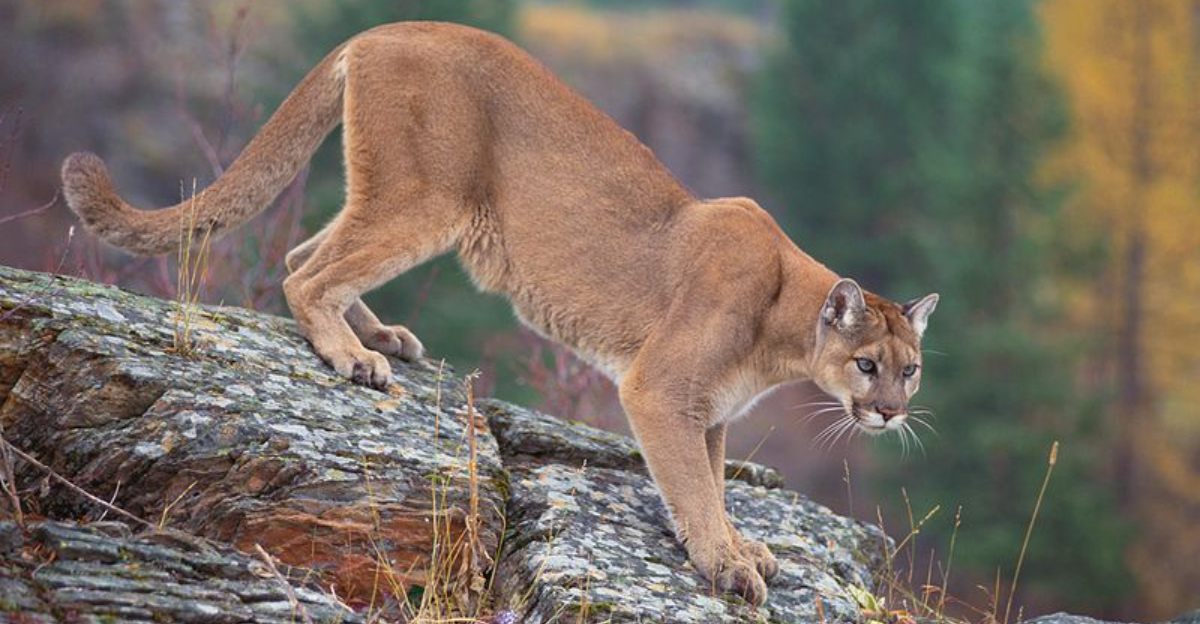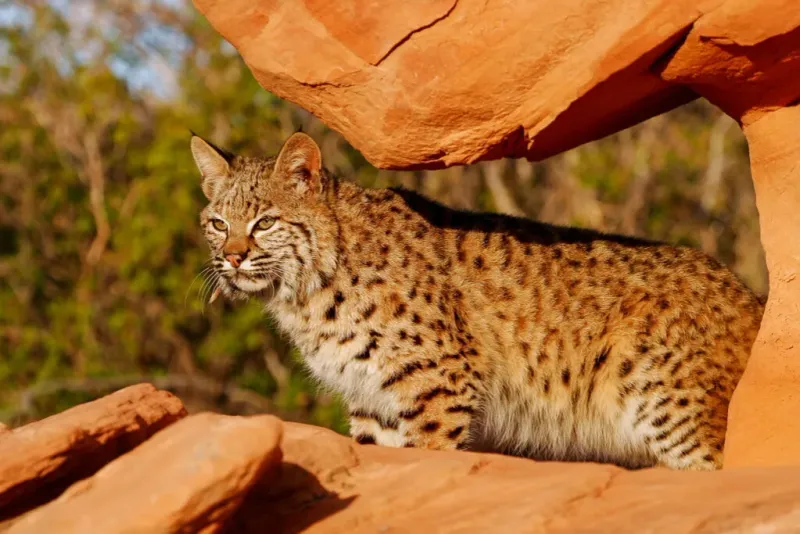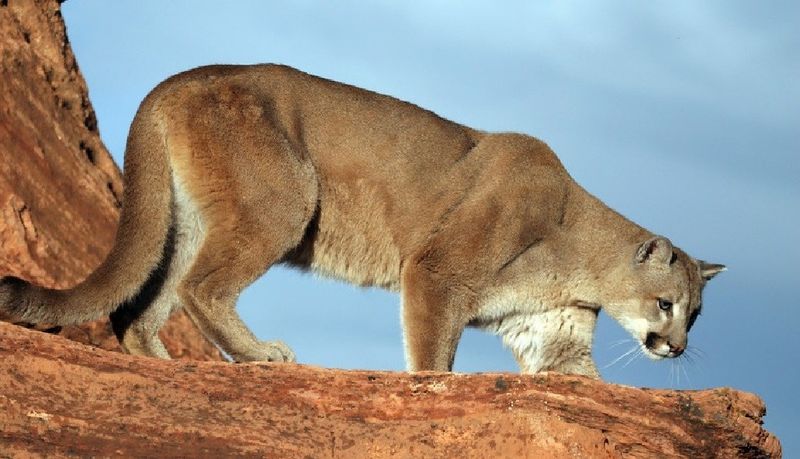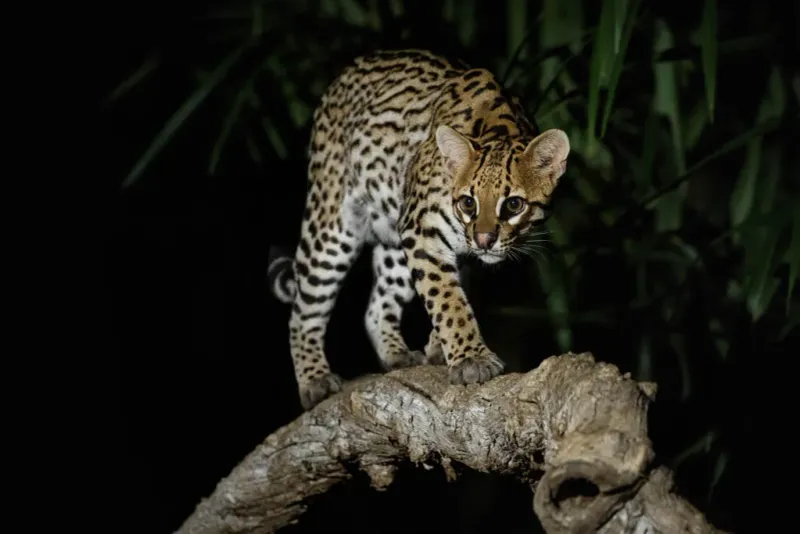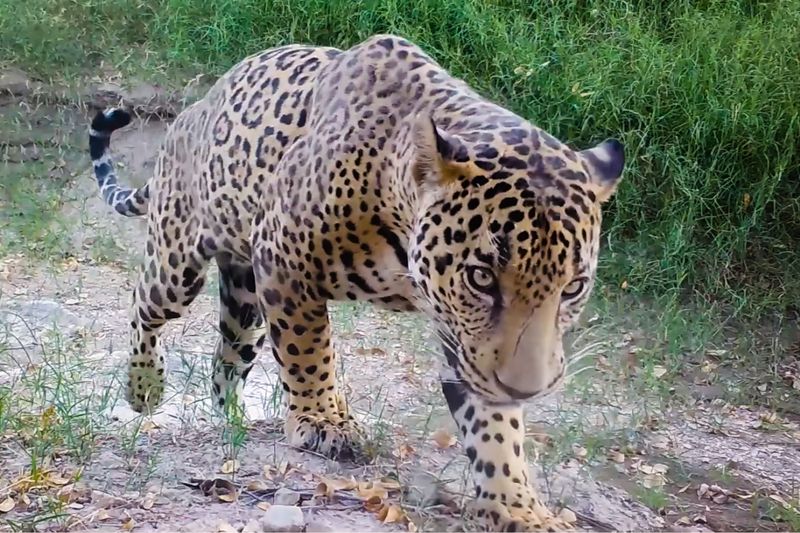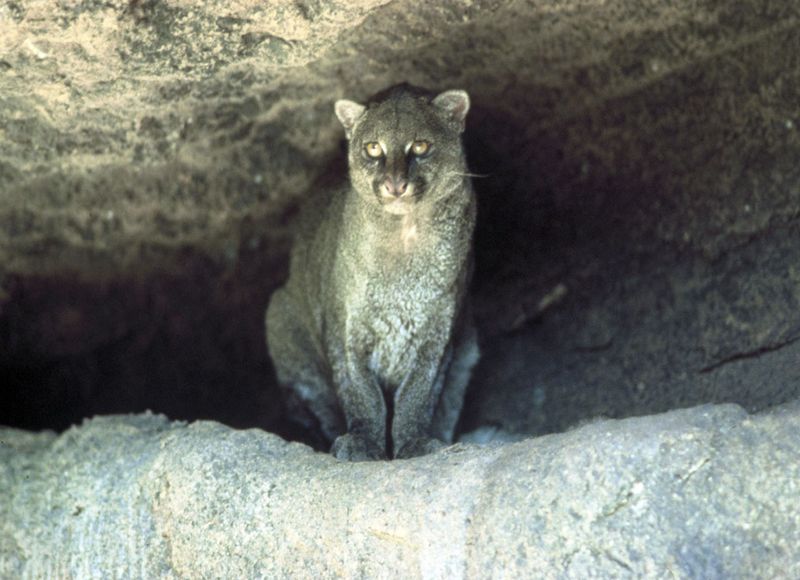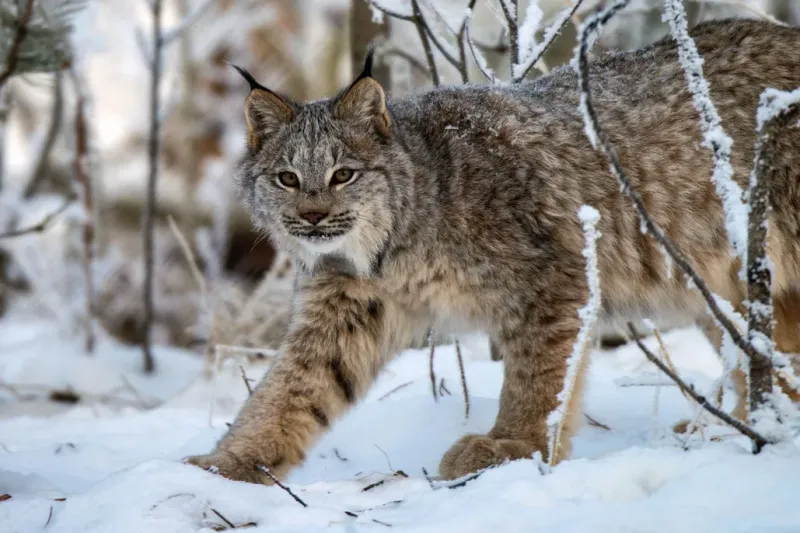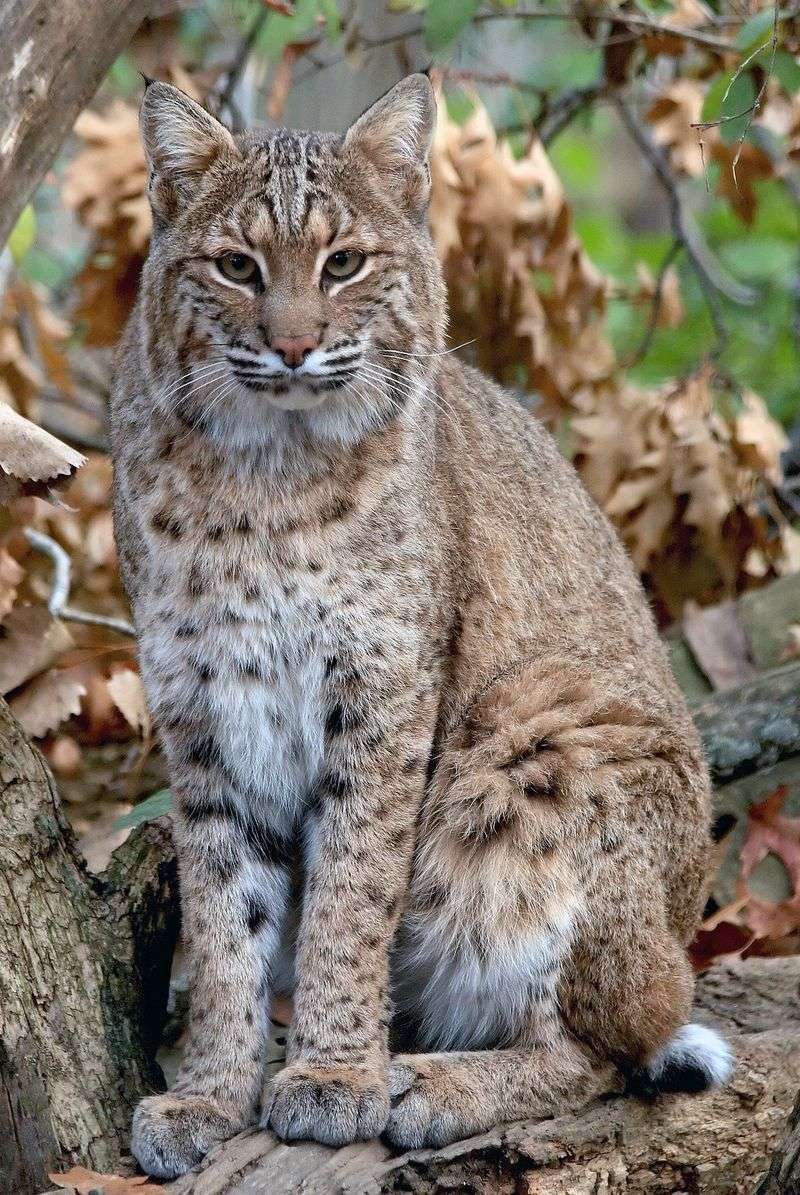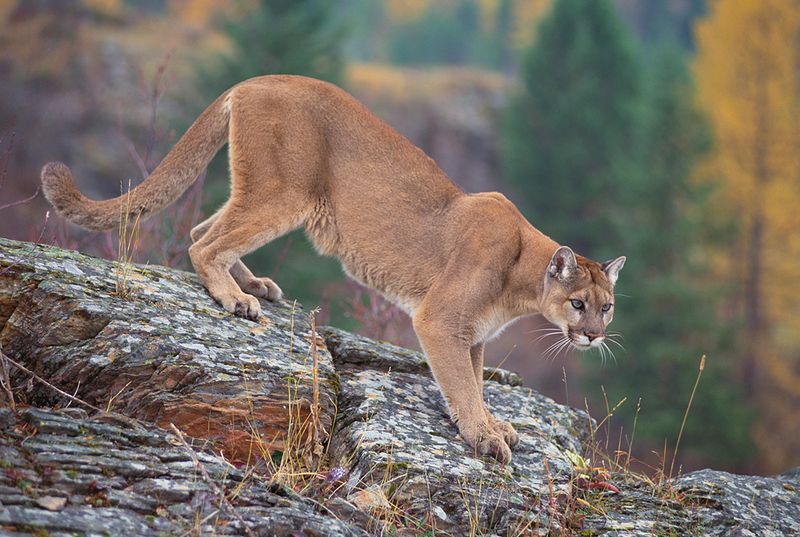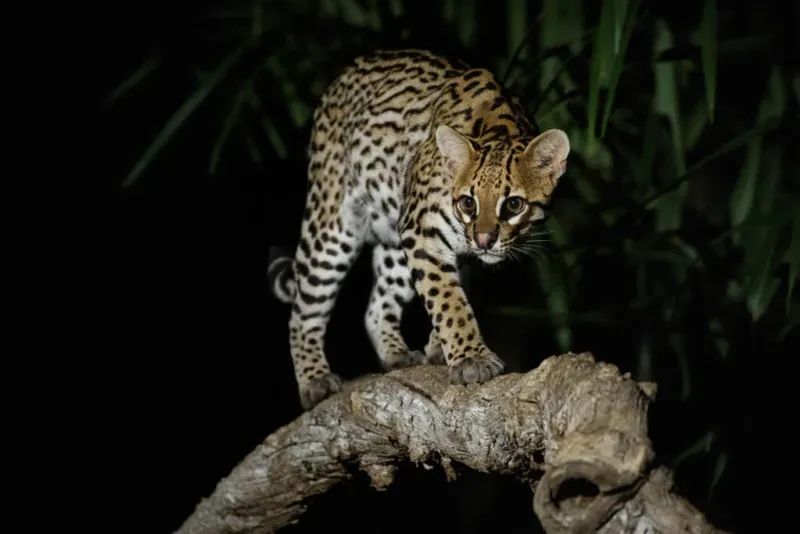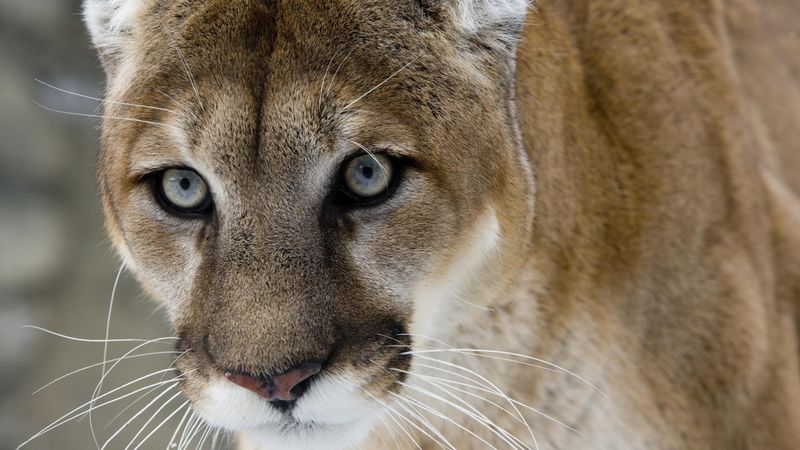📖 Table of Content:
- 1. Bobcat (Lynx rufus) – Desert
- 2. Mountain Lion / Cougar (Puma concolor) – Desert
- 3. Ocelot (Leopardus pardalis) – Desert
- 4. Jaguar (Panthera onca) – Desert (historical range)
- 5. Jaguarundi (Herpailurus yagouaroundi) – Desert
- 1. Canada Lynx (Lynx canadensis) – Forest
- 2. Bobcat (Lynx rufus) – Forest
- 3. Mountain Lion / Cougar (Puma concolor) – Forest
- 4. Ocelot (Leopardus pardalis) – Forest
- 5. Eastern Cougar (Puma concolor couguar) – Forest (extinct/subspecies debated)
Across the varied landscapes of North America, wild cats have evolved into masters of survival, each uniquely adapted to thrive in environments that range from scorching deserts to shadowy forests. These elusive felines, often unseen by human eyes, are crucial components of their ecosystems, balancing prey populations and shaping the habitats in which they live. Their secretive natures and powerful hunting instincts make them fascinating subjects for anyone intrigued by the wild animals that dwell just beyond our view.
Deserts pose an unforgiving challenge, offering little water, searing heat, and sparse cover. Yet even here, certain wild cats have not only endured but flourished. Ranging from the rugged terrain of the Mojave to the dry forests of northern Mexico, these desert felines rely on stealth, stamina, and superb adaptations to stay one step ahead of both predator and prey.
Conversely, the dense forests of North America offer a different kind of survival puzzle—thick vegetation, shifting seasons, and limited visibility demand a keen sense of hearing and unmatched patience. Forest-dwelling wild cats use their environment to their advantage, vanishing into the underbrush and striking when opportunity calls. Let’s explore these incredible creatures and learn how each has carved out a niche in North America’s diverse wilderness.
1. Bobcat (Lynx rufus) – Desert
Roaming from the deserts of the Southwest to temperate zones in the East, the bobcat is one of North America’s most adaptable wild cats. With its tufted ears and short tail, the bobcat is often mistaken for its northern cousin, the lynx, but it’s a species all its own. In arid regions, it survives by hunting rabbits, rodents, and birds, adjusting its activity to cooler twilight hours. Its sandy-colored coat provides camouflage among rocks and scrub, making it nearly invisible in its natural habitat. Bobcats maintain territories through scent-marking and will fiercely defend them against intruders. They are solitary animals, meeting only to mate and then parting ways quickly afterward. Despite human encroachment, bobcats continue to thrive in deserts thanks to their secretive habits and broad diet.
2. Mountain Lion / Cougar (Puma concolor) – Desert
Known by many names—puma, cougar, panther—this large feline boasts one of the widest ranges of any terrestrial mammal in the Western Hemisphere. In desert terrain, it makes use of cliffs, ravines, and dry riverbeds to stalk prey, often covering great distances silently. Unlike many desert animals, mountain lions do not dig for water but instead obtain moisture from the bodies of their prey. Their muscular build allows them to leap over 20 feet in a single bound, an advantage when navigating rugged canyons. Opportunistic feeders, they consume deer, coyotes, and even porcupines when necessary. Cubs stay with their mothers for up to two years, learning the skills needed for independent survival. Despite being rarely seen, cougars play a pivotal role in controlling herbivore populations.
3. Ocelot (Leopardus pardalis) – Desert
Slipping through the thorny underbrush of southern Texas and northern Mexico, the ocelot exemplifies feline grace and secrecy. Its striking rosette-patterned coat blends perfectly with the dappled light of dry forests and desert scrublands. As nocturnal hunters, ocelots pursue rodents, reptiles, and ground-dwelling birds, often moving with cat-like silence through the shadows. Unlike many other wild cats, they rely heavily on cover and will rarely cross open areas in daylight. Once ranging more widely in the U.S., ocelots are now found in only small, isolated populations in Texas. Habitat loss and road mortality pose serious threats to their survival, making them a conservation priority. Nevertheless, their elusive presence continues to haunt the edges of arid ecosystems.
4. Jaguar (Panthera onca) – Desert (historical range)
Although now extremely rare in the U.S., the jaguar once prowled the desert canyons of Arizona and New Mexico. These powerful cats prefer dense cover but have shown remarkable adaptability to semi-arid regions when water sources are available. With a bite strong enough to crush turtle shells, jaguars are apex predators capable of taking down large prey. Unlike most cats, they are excellent swimmers and often hunt near water sources such as desert streams or springs. Males patrol vast territories and may travel between mountain ranges in search of food and mates. The jaguar’s decline in the U.S. is tied to habitat fragmentation and past predator control efforts. Sightings today are few, but conservationists remain hopeful about its potential return.
5. Jaguarundi (Herpailurus yagouaroundi) – Desert
Unusual in appearance, the jaguarundi resembles a weasel more than a typical cat, with a long body and short legs suited to weaving through dense thorn forests. Found on the fringes of Texas and more commonly in Mexico and Central America, this feline can live in scrubby deserts as well as semi-open woodlands. Active during the day, unlike many other cats, it often hunts in the early morning or late afternoon for birds, reptiles, and small mammals. Its drab gray or reddish coat helps it stay hidden in sun-baked grasses and underbrush. Though rarely seen, its tracks and calls occasionally reveal its presence to the attentive observer. Jaguarundis are solitary and secretive, rarely vocalizing except during the mating season. Much about their habits remains a mystery due to their elusive nature and shrinking range.
1. Canada Lynx (Lynx canadensis) – Forest
Dwelling in the snowy forests of the northern U.S. and Canada, the Canada lynx is a specialist of the boreal wilderness. Its enormous paws act like snowshoes, allowing it to glide effortlessly across deep snow in pursuit of its primary prey, the snowshoe hare. With keen hearing and excellent night vision, it waits patiently for the right moment to strike. Canada lynx are mostly silent, using subtle body language and scent marking to communicate. They prefer remote, forested regions and will avoid areas disturbed by humans. During winter, their silvery-gray coat offers both warmth and camouflage among the snow-covered trees. This cat’s fate is closely tied to the hare population, making it a barometer of northern forest health.
2. Bobcat (Lynx rufus) – Forest
Though often associated with deserts, the bobcat also thrives in woodland environments, adapting its behavior to suit the dense forest cover. It uses fallen logs, underbrush, and rocky ledges as both hunting perches and den sites. Stealth is its greatest weapon, allowing it to silently approach small mammals and birds before delivering a fatal pounce. In forests, it may take advantage of tree cover to ambush prey along game trails and forest edges. The bobcat’s ability to remain unseen has allowed it to persist even in areas with moderate human activity. It is an opportunist, adjusting its diet and behavior based on local conditions. This flexibility makes it one of the most widespread wild cats in North America.
3. Mountain Lion / Cougar (Puma concolor) – Forest
Winding through the shadows of mountain forests, the cougar adapts seamlessly to forested environments just as it does to deserts. With dense undergrowth to conceal its movements, it stalks deer and elk, waiting for the perfect moment to attack. Its tawny coat provides natural camouflage among sun-dappled foliage. These solitary predators require vast ranges to support their needs, with males often covering up to 200 square miles. They are both climbers and sprinters, capable of scaling steep slopes or pursuing prey in sudden bursts. Forest cougars often den in caves or thickets to raise their young in secrecy. Their presence is vital for maintaining balanced herbivore populations and forest regeneration.
4. Ocelot (Leopardus pardalis) – Forest
In the forested thickets of southern Texas and northern Mexico, the ocelot moves like a living shadow. Its coat, a masterpiece of evolution, allows it to melt into the leafy mosaic of light and shadow. Unlike some forest cats, ocelots are agile climbers but prefer to hunt on the ground. Their method is patience—waiting, watching, then striking in an instant. Forest-dwelling ocelots rely on dense vegetation for safety from predators and proximity to food sources. They’re known to create dens among tree roots or fallen logs, where cubs are hidden from danger. As forest fragmentation continues, corridors between patches are vital for their survival.
5. Eastern Cougar (Puma concolor couguar) – Forest (extinct/subspecies debated)
Haunting the legends of Appalachia, the Eastern cougar once roamed from Canada to the Carolinas, slipping silently through hardwood forests. Although declared extinct or critically endangered, this subspecies evokes a sense of mystery and resilience. Its habits mirrored those of western cougars—stealthy, solitary, and territorial. Moving under cover of night, it preyed on white-tailed deer and smaller forest animals. With broad feet and powerful legs, it navigated rugged hills and thick foliage with ease. Some claim occasional sightings, but none have been confirmed in recent years. The story of the Eastern cougar remains a poignant symbol of wildness lost and the ongoing debate over nature’s ability to reclaim its former range.
